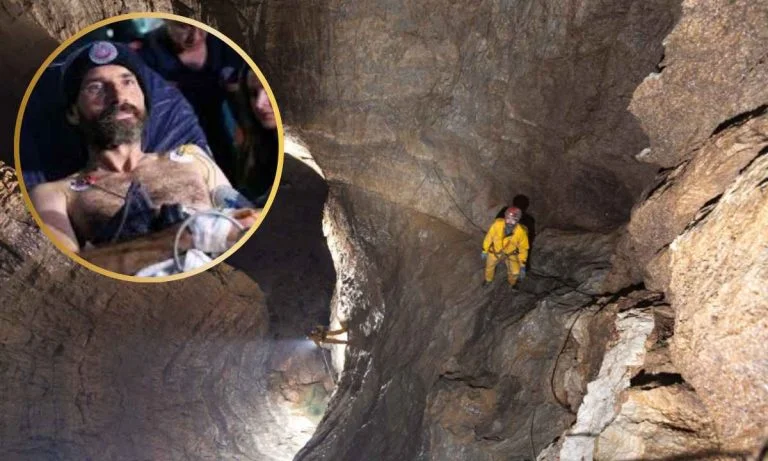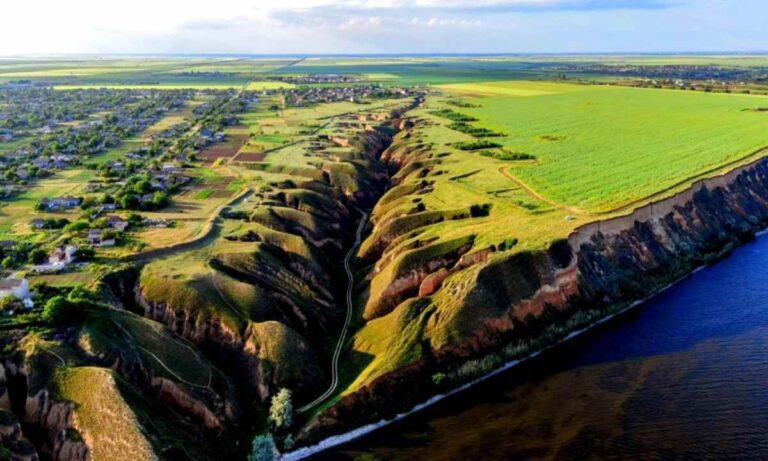China’s Loneliest Highway Through The Unwelcoming Gobi Desert | The Highway Looks Like A Road In Mars!
The Gobi desert encompasses a massive 500,000 square kilometers in Northern China. China’s loneliest highway, National Highway 315 traverses this vast inhospitable landscape. The road is also filled with some otherworldly sights that make it resemble a “Road in Mars.” Also known as the Qinghai-Xinjiang Highway, it was constructed in 1954. It stretches 3,063 kilometers (1,903 miles) west from Xining, Qinghai, to Kashgar, Xinjiang.
In 1994, Qinghai and Xinjiang’s communication and transportation departments started updating the highway. In the west, it goes through the Qaidam Basin desert south of the traditional Silk Road, crosses the Altyn-Tagh into Xinjiang, and then follows the south side of the Tarim Basin to Kashgar. Being a desert road, it is often compared to US Route 66, which we also discuss below. Let’s first savor some of the amazing sceneries offered when traveling on this lonely highway and discuss the highlights of this journey.
China’s Loneliest Highway
The road connects Xining with Kashi through some of the most remote and varied landscapes in China. Sprawling deserts, towering mountains, serene lakes, and historic sites—all can be found along this route.

Quinghai Lake
One of the absolute highlights of the road is Qinghai Lake—the largest saltwater lake in China. The highway skirts its southern edge, providing clean views of both the water and the surrounding grasslands. It is especially beautiful during summer when wildflowers are in bloom, creating a colorful contrast against the blue lake. There are also kinds of birds here, so it is an attractive place for birdwatchers.

Qaidam Basin
Further down the highway, you travel through the Qaidam Basin, desolate and with remarkable geological features. Among its famous features are vast salt flats, oil fields, and the Yadan landforms, which, resembling a city of stone, are a creation of wind erosion on the rocks. This part of the journey is alien, full of stark beauty and ruggedness. One can sightsee around the salt lakes and see how high-altitude desert sprawls before your eyes.


Kunlun mountains
The highway heads west until reaching the Kunlun Mountains, the second-longest mountain range in Asia. Dramatic views of peaks towering up on both sides of the road are provided by winding through these high peaks that are very challenging to drive on. Hiking and mountaineering are possible from various sites in the mountains. This area is a habitat for many endemic species, such as the snow leopard and the Tibetan antelope.


Taklamakan Desert
Finally, the highway spans the enormous Taklamakan Desert, one of the biggest sandy deserts in the world. It is rough due to extreme temperatures and shifting sands, but at the same time, it gives one a rare chance to take a glimpse at endless dunes and ancient ruins of the Silk Road in the desert. On China Highway 315, travelers who want excitement and nature’s beauty will experience a varied adventure.

The Gobi desert
The Gobi Desert is a desert situated in northern China and southern Mongolia, and it’s one of the biggest deserts in the world. It has an area of more than 1,000,000 square kilometers. Contrary to many other deserts, it is composed not of dunes but of bare rock. Its climate is very hostile, with temperatures varying from -40°C in winter to 45°C in summer.

The Gobi Desert is very important from a historical point of view since it was part of both the Mongol Empire and the Silk Road. Many of the ancient trading routes crossed its gigantic area, connecting East with West. The desert has also yielded several significant paleontological discoveries, including dinosaur fossils.
The fauna in the area becomes customized to the arid conditions. Some inhabitants of this region include the Bactrian camel, the snow leopard, and the Gobi bear. Human populations are very scant, and a huge proportion is composed of nomadic herders. They survive on livestock and traditional ways of life in this hostile environment.
Some other roads through deserts
Now that we looked at China National Highway 315 let’s look at some other roads through deserts in various parts of the world.
Trans-Sahara Highway
The Trans-Sahara Highway crosses the Sahara Desert, connecting North Africa with sub-Saharan Africa. This route stretches over 4,500 kilometers from Algiers to Lagos.

U.S. Route 66
U.S. Route 66, known as the “Main Street of America,” passes through the Mojave Desert. Established in 1926, it stretches from Chicago to Santa Monica. It played a key role in westward migration and economic development. Although decommissioned, it remains iconic and attracts tourists.

Outback Way
The Outback Way, also called “Australia’s Longest Shortcut,” traverses the Australian Outback. It spans 2,800 kilometers, connecting Laverton in Western Australia to Winton in Queensland. This route opens up remote areas to tourism and transport. The road highlights the vast and rugged landscapes of the Australian desert.

Ruta 40
Ruta 40 runs through the Patagonian Desert in Argentina. It is one of the longest roads in the world, stretching over 5,000 kilometers from La Quiaca to Cabo Vírgenes. This highway offers access to remote and scenic areas, promoting tourism and local development. It also plays a vital role in connecting isolated communities in Argentina.

Conclusion
China National Highway 315 is second to none in terms of the diversity and historicity of landscapes that one travels through in spite of the inhospitable terrain. From Xining to Kashgar, it hosts a raft of scenes, from the bursting colors of summer at Qinghai Lake to the desolation of the Qaidam Basin and the dramatic peaks of the Kunlun Mountains.
Also read,







